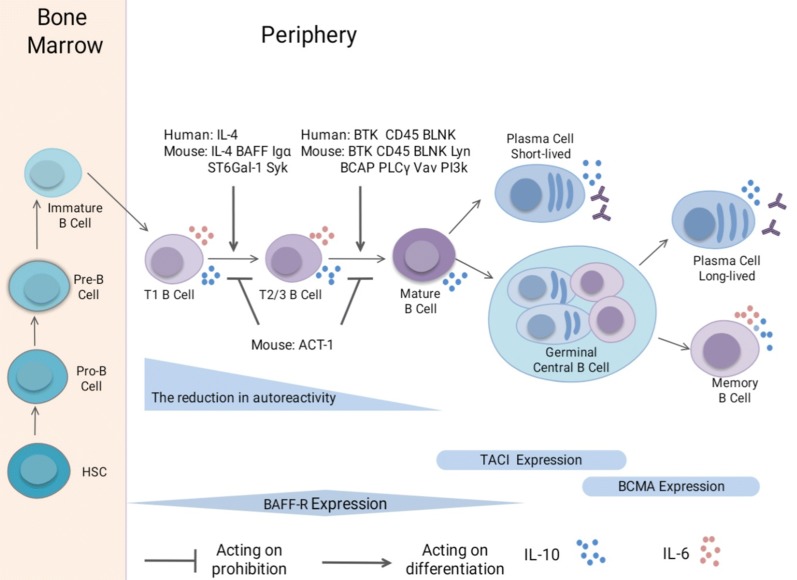Fig. 1.
B cell differentiation pathways and expression of TrB-associated molecules. In the bone marrow (BM), HSCs undergo several stages of differentiation before they develop into immature B cells, including the pro-B and pre-B cell stages. The immature B cells emigrate from the BM, subsequently differentiating into T1 B cells in the periphery and then to the late TrB (T2/3 B) cells. This maturation step from T1 B cells to T2/3B cells requires IL-4, BAFF, Igα, ST6Gal-1, and Syk in mice and IL-4 in humans. The subsequent process of TrB cell differentiation into mature B cells requires BTK, CD45, and BLNK both in mice and humans, and Lyn, BCAP, PLCγ, Vav, and PI3K in mice. ACT-1 in mice plays a negative role in the development of TrB cells. Autoreactivity gradually reduces during B cell maturation, especially during TrB cell development. The late TrB cells develop into mature B cells, and give rise to either short-lived plasma cells or germinal center B cells. In the germinal center, they can undergo selection to differentiate into long-lived plasmablasts or memory B cells. B cells express three forms of BAFF receptors. BAFF-R is expressed on B cells from the TrB cell stage to the memory B cell stage in B cells, except in BM plasma cells, TACI is mainly expressed on memory B cells and some active mature B cells, whereas BCMA is expressed on memory B cells and plasma cells. IL-10 can be produced by TrB cells, mature B cells, plasmablasts, and memory B cells. IL-6 is expressed in TrB cells and memory B cells

